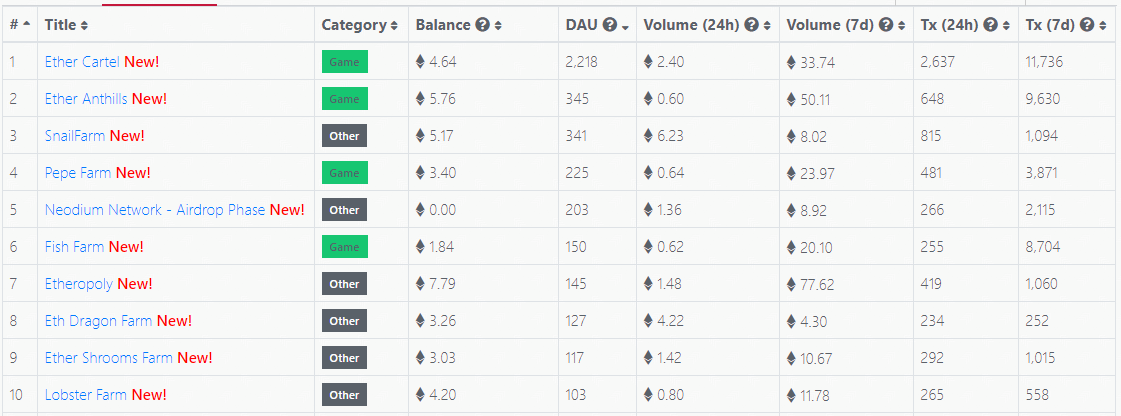 Ethereum Network Congestion Doubles Gas Fees as Game dApps Capture $7.5M in 24 Hours
Ethereum Network Congestion Doubles Gas Fees as Game dApps Capture $7.5M in 24 Hours Ethereum Network Congestion Doubles Gas Fees as Game dApps Capture $7.5M in 24 Hours

Photo by Jeff Neale on Unsplash
The Ethereum distributed app ecosystem is currently experiencing explosive growth, with Etherueum dApps capturing over $7.5 million USD across 500 different applications and 11,000 users in the last 24 hours. While increased use of the Ethereum blockchain is arguably a good thing, however, the surge in transaction throughput has caused congestion, doubling Gas fees.
According to distributed app tracking website Dapp Insight, more than 10,000 ETH has been transacted over Ethereum-based dApps over the last day, consuming more than 14 million GAS. The dramatic increase in dApp use mirrors the impact of CryptoKitties, an Ethereum-based dApp that caused significant ETH transaction delays in December 2017.
Ethereum Game dApps Slow Down Network
The dramatic rise in GAS fees is attributed to the viral popularity of a slew of games emerging from online forums. While not as damaging to Ethereum transaction throughput as CryptoKitties, these new dApps have amassed over 26,000 transactions in 24 hours, causing GAS costs to double in price to $0.02.

The spike in Ethereum dApp game interest has demonstrated the fragile nature of the Ethereum blockchain, illustrating the impact of a relatively small increase in transaction throughput on the capacity of the network. Ether Shrimp Farm, one of the most popular games causing network congestion, places players in control of a virtual shrimp farm with the goal of optimizing shrimp production, ultimately trading eggs for ETH.
Ether Cartel takes a similar approach, providing players with the opportunity to manage a narcotic empire through an idle-clicking style format. While there are a number of serious Ethereum dApps that provide legitimate utility, such as document publishing dApp documentary, games are currently dominating the dAppRadar leaderboard — Ether Cartel currently ranks number one, clocking up over 11,000 transactions over the last week.

The whimsical use of the Ethereum blockchain to play games may be mildly amusing to some but many market participants are unimpressed, highlighting the fact that if the second largest cryptocurrency by market cap can be “ destroyed by CryptoKitties and shrimp farms” then it probably isn’t “ready for prime time.”
Increased transaction volume does have a detrimental impact on GAS fees and transaction times, but has an overall positive effect on adoption as a whole —data available from BitInfoCharts demonstrates that the number of active addresses on the Ethereum network has exceeded inactive addresses for almost one week, approaching the previous best streak of 4 straight days in mid-January:

Is the Ethereum Blockchain Ready for Large-Scale Transaction Volume?
At this point in time, the Ethereum blockchain can handle roughly 13 transactions per second, which is halved for token transfers. As a result, it’s not easy to create a distributed application on the Ethereum blockchain that can be used by an extremely large user base at the same time.

The upcoming Ethereum consensus method change, once implemented, should ultimately see the sharding scaling solution integrated, which could potentially provide a solution to the transaction throughput issue.
For now, however, innovative distributed app developers are creating workarounds in the form of DAppchains, which creates application-specific sidechains that run parallel to the Ethereum main chain.
The Loom project, which promises large-scale blockchain-based apps and games, is a strong example of sidechain-based dApp innovation that could see Twitter-scale dApps become feasible in the near future.



 CoinGlass
CoinGlass 


 Farside Investors
Farside Investors 



















































































